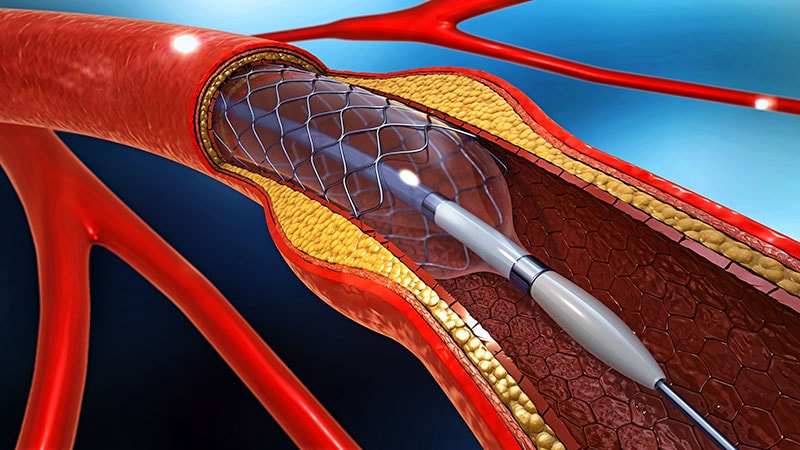Persistent Hyperglycemia Linked to Heart Risk in Youth
TOPLINE:
Persistent hyperglycemia and elevated insulin resistance may increase the risk of worsening structural and functional cardiac damage in young individuals of mostly normal body mass index (BMI), with fat mass mediating two thirds of this association overall, and with women more adversely affected than men.
METHODOLOGY:
- Hyperglycemia and insulin resistance are precursors of young-onset type 2 diabetes and are associated with cardiac and vascular changes, but no evidence has linked the metabolic changes with cardiac remodeling in apparently healthy adolescents.
- Researchers followed 1595 adolescents (59.8% women) from a UK-based cohort from ages 17 to 24 years, to evaluate the longitudinal associations of persistent hyperglycemia and increased insulin resistance with the risk for cardiac damage.
- They included participants with data on fasting plasma glucose and insulin levels, as well as echocardiography measurements of left ventricular mass indexed for height (LVMI2.7) and other cardiac parameters, both at baseline (age, 17 years; mean BMI, 22) and follow-up (age, 24 years; mean BMI, 23), with LV hypertrophy defined as LVMI2.7≥ 51 g/m2.7.
- Hyperglycemia was defined by fasting glucose levels ≥ 5.6 mmol/L or ≥ 6.1 mmol/L, insulin resistance was assessed using the Homeostatic Model Assessment for Insulin Resistance (HOMA-IR), and total body fat mass was measured using a dual-energy x-ray absorptiometry scanner.
- The mediating effects of lipids, high-sensitivity C-reactive protein, systolic blood pressure, total body fat mass, and lean mass in the relationships of hyperglycemia and insulin resistance with cardiac changes were also analyzed.
TAKEAWAY:
- The prevalence of hyperglycemia increased fivefold from age 17 to 24 years, regardless of the glucose thresholds used, and the prevalence of LV hypertrophy increased threefold in the total cohort, from 2.4% to 7.1%.
- Over 7 years, persistent hyperglycemia at ≥ 5.6 mmol/L or ≥ 6.1 mmol/L was associated with higher odds of LV hypertrophy progression (odds ratio [OR], 1.46; P < .001; and OR, 3.10; P = .021; respectively).
- Overall, hyperglycemia and insulin resistance bumped up the odds of progressive cardiac damage in both sexes; for each unit increase in glucose, female participants experienced a fivefold greater increase in LVMI2.7 than male participants.
- In opposite cardiac effects of insulin resistance between the sexes, increased total fat mass in men was linked to a 178% suppression of the association between HOMA-IR and increased LVMI2.7, whereas increased total fat mass in women explained 95% of the association.
IN PRACTICE:
“The current findings further confirm that even healthy-looking adolescents and young adults who are mostly normal weight may be on a path toward cardiovascular diseases if they have high blood glucose and insulin resistance. Surprisingly, we observed that high blood sugar may aggressively damage females’ hearts five times faster than males’; therefore, special attention should be paid to girls in terms of prevention,” the lead author said in a press release.
SOURCE:
This study was led by Andrew O. Agbaje, Institute of Public Health and Clinical Nutrition, School of Medicine, University of Eastern Finland, Kuopio, Finland. It was published online on April 28, 2025, in Diabetes Care.
LIMITATIONS:
The gold standard measures of insulin sensitivity and secretion, such as the clamp test, were unavailable, due to limited feasibility in this large epidemiological study. The findings may not be generalizable to other ethnic groups as participants were predominantly White individuals (96%). The observational nature of this study makes it challenging to establish causation, warranting further experimental studies.
DISCLOSURES:
This cohort study received support from the UK Medical Research Council, Wellcome, and the University of Bristol. The research group of the lead author received funding from multiple foundations, including the Jenny and Antti Wihuri Foundation, the North Savo regional and central Finnish Cultural Foundation, Orion Research Foundation, and several others. The authors reported no conflicts of interest.
This article was created using several editorial tools, including AI, as part of the process. Human editors reviewed this content before publication.


 Admin_Adham
Admin_Adham


